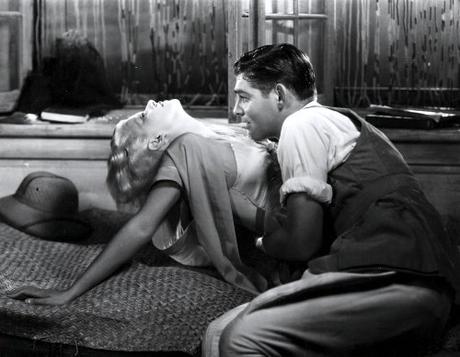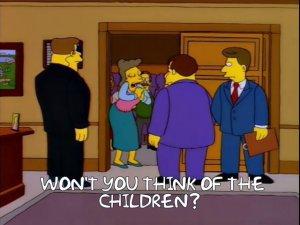
March 31, 1930, a date that will live in...minor notoriety?
To be honest, it's not even a date I normally remember as being important, but thanks to an NPR report this morning I was reminded that March 31, 1930 is the day the Motion Picture Producers and Distributors of America (the precursor organization to our current MPAA) officially adopted the Hays Code.
The Hays Code? What's that?
To recap: the Hollywood of the 1910s and 20s was seen by some influential leaders as a den of sin, with such a view seemingly confirmed by the endless cycle of national scandals involving Hollywood personalities, chiefly Fatty Arbuckle's murder trial. The Helen Lovejoys of the world screamed "Won't someone please think of the children!" The politicians stumped about religion and corruption and gettin' right with Jesus and all that. And the film studio heads all came away sufficiently spooked by the threat of federal legislation imposing strict censorship laws.
So, in 1922 the MPPDA was created, a former postmaster general named Will Hays hired to run it, and federal legislation efforts died off now that Hollywood was voluntarily censoring itself. Well, in theory. In truth, the next decade was an endless back and forth between Hays trying to impose his Presbyterian values on Hollywood, and Hollywood rolling its eyes and retorting, "You have no authority over us. This censorship is entirely voluntary."
That didn't stop Hays from trying. He first attempted to exert control over all script that came through town so that he could cut off moral impropriety at the earliest stage of film development. Through that effort, he managed to reject 125 scripts from ever being filmed.
Religious leaders were still pissed because, well, the films were still dirty and clearly no one was thinking of the poor children.

So, in 1927 Hays released a set of 11 "Don'ts" (e.g., no foul language, no nudity or even hint of nudity) and 25 "Be Carefuls" (e.g., don't be too critical of public institution, don't impugn the sanctity of marriage). But directors like Cecile B. Demille and Howard Hughes more or less said "Fuck that!" and made whatever they wanted to.
Religious leaders were again displeased, and finally took matters into their own hands.
Martin Quigley and Reverend Daniel A. Lord, the former a Catholic publisher of an influential movie trade publication and the latter a Catholic theologian, took Hays' set of "Don'ts" and "Be Carefuls" and converted them into what they called the Motion Picture Production Code. It was basically the same as Hays 1927 guidelines but with more specific detail and an addendum addressing the moral acceptability of film advertising materials. The studio heads signed off on it, and on March 31, 1930 the MPDDA agreed to abide by the Code.
And everyone lived happily ever after.
Well, no. All those Catholic dudes are long since dead, and while March 31, 1930 is the day the code was formally adopted true censorship didn't truly come to Hollywood until 1934. By that point, The Great Depression had caused film attendance to plummet 40% from the start of the decade and nearly one-third of the nation's movie theaters had closed their doors for good. Then the Archbishop of Philadelphia called on the city's Christians to boycott all movies (because, you know, sin), causing ticket sales to drop by as much as 20%. If other Archbishops around the country followed his lead the studios would feel the pain.
Thus, the so-called Hays Code became the official and crucially enforceable law of the land in 1934. All movies had to be approved by Hays' office (called the Production Code Authority) before shooting could begin, and the PCA maintained approval over the final product. Any theaters caught exhibiting a non-PCA approved film faced a significant fine.
It stayed that way for 25 years, but the social mores changed. By 1959, Some Like It Hot violated every part of the Code and got away with it, and by 1968 the Code was abolished for good and replaced with the MPAA's ratings system. Now, we look at strictly censored countries like China and vaguely recall the Hays Code and how our country's films used to be censored too.
But what, really, was so bad about all those pre-Code films? Were they really so raunchy?
Um, not as raunchy as a typical Farrelly Brothers comedy, but probably raunchier than you'd expect. Behold, some examples via sweet lady YouTube:
What about the cartoons?
And it turns out there are tons of fan-made music videos celebrating pre-code Hollywood. Here's one set to Joan Jett's "Do You Wanna Touch Me (Oh Yeah)":

